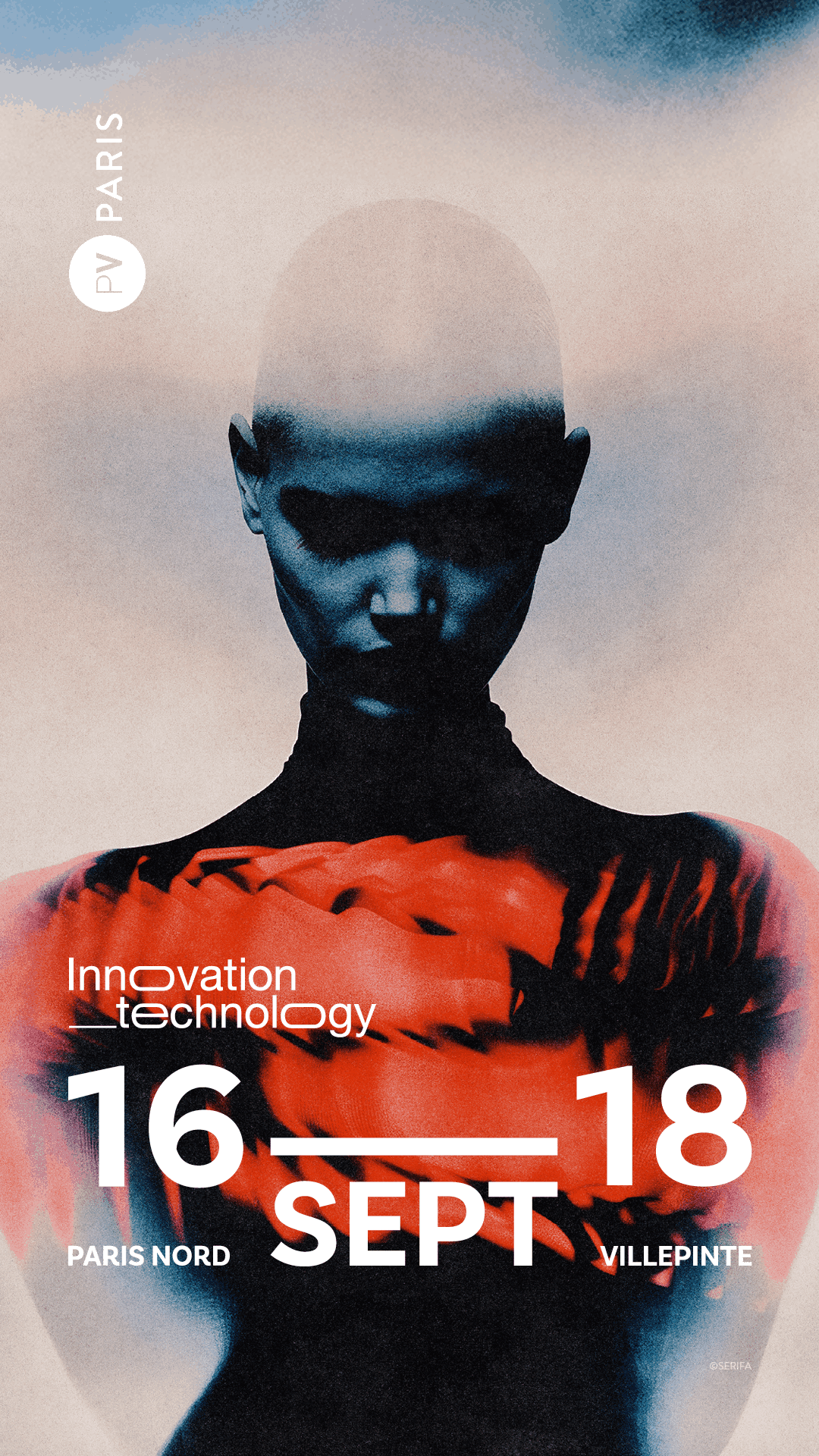
DZHUS Pieces Live Their Own Life, Their Own Metamorphosis
Kiev-based designer and stylist Irina Dzhus has been in the headlines for the past decade: her transformative, utilitarian approach to design has made the fashion industry contemplate the multiplicity of styling options offered by a single garment.
Irina’s eponymous brand, DZHUS, meets all the requirements of sustainable fashion: it follows a make-to-order model, designs to reduce waste, offers sustainable packaging, uses ethical materials and is functional. In short, DZHUS is the herald of sustainable innovation. From a broader perspective, its avant-garde style draws attention to geometric shapes and the transformation of multi-purpose garments that ultimately propose a solution to the problem of over-consumption, with a strong focus on innovation and artistry.
DZHUS presents its collections at Ukrainian and Paris Fashion Weeks; it has won the cruelty-free fashion award at the Best Fashion Awards in Ukraine in 2019; and its garments have been featured in The Hunger Games circa 2013. Her designs, made for people aware and curious about the variants of fashion, sing of the future of the industry, where the most eccentric forms of creativity make their way through methods of functionality and moral modus operandi. And while we don’t yet know how the industry will transform, we’re sure that DZHUS is one of those gems to watch out for. Scroll down to get inspired by the art of sustainable fashion.
“Smart [functional and innovative] alternatives are the future for the fashion industry, which is now experiencing a crisis of quantity over quality, facing a problem of stock utilisation and clothing waste.”
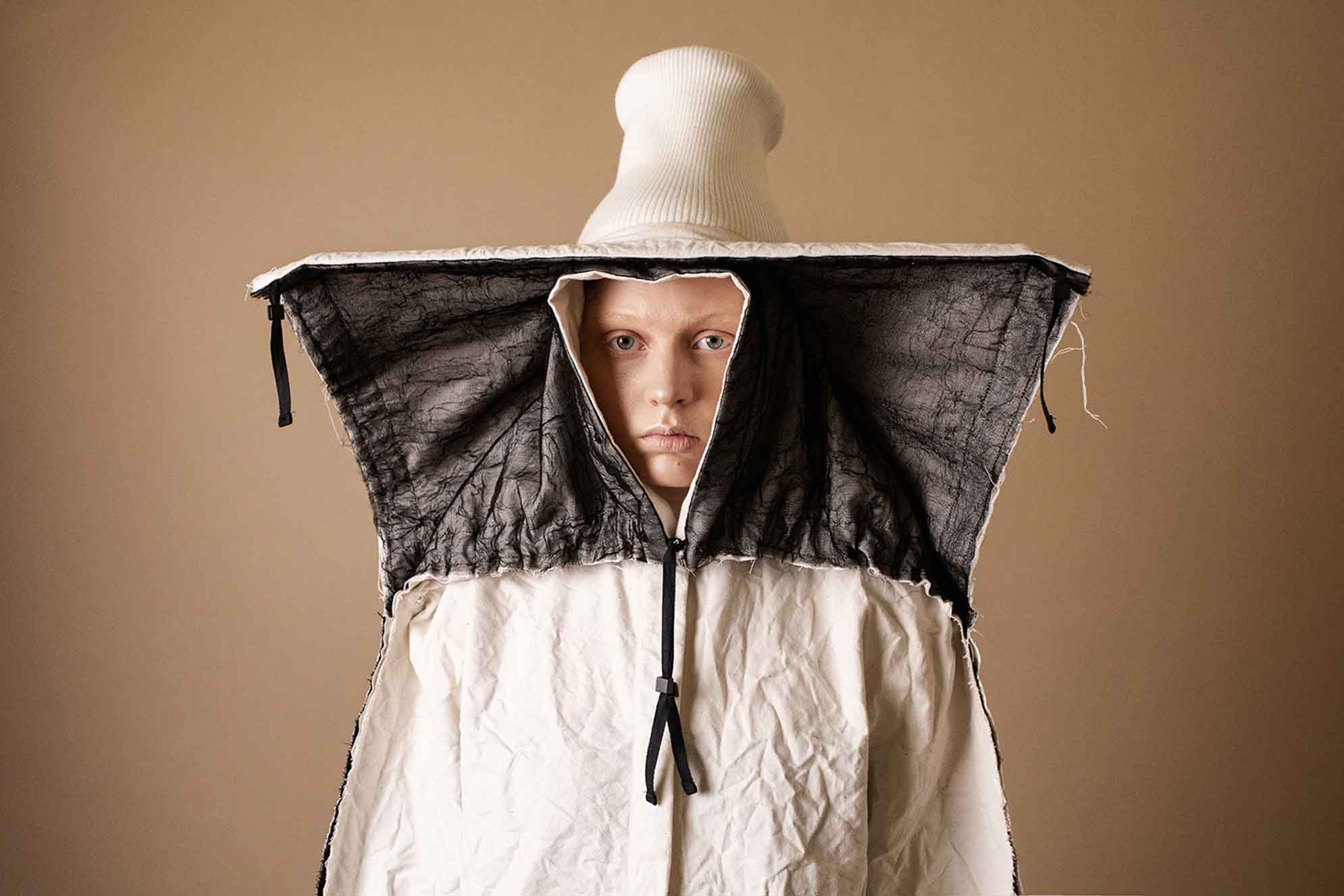

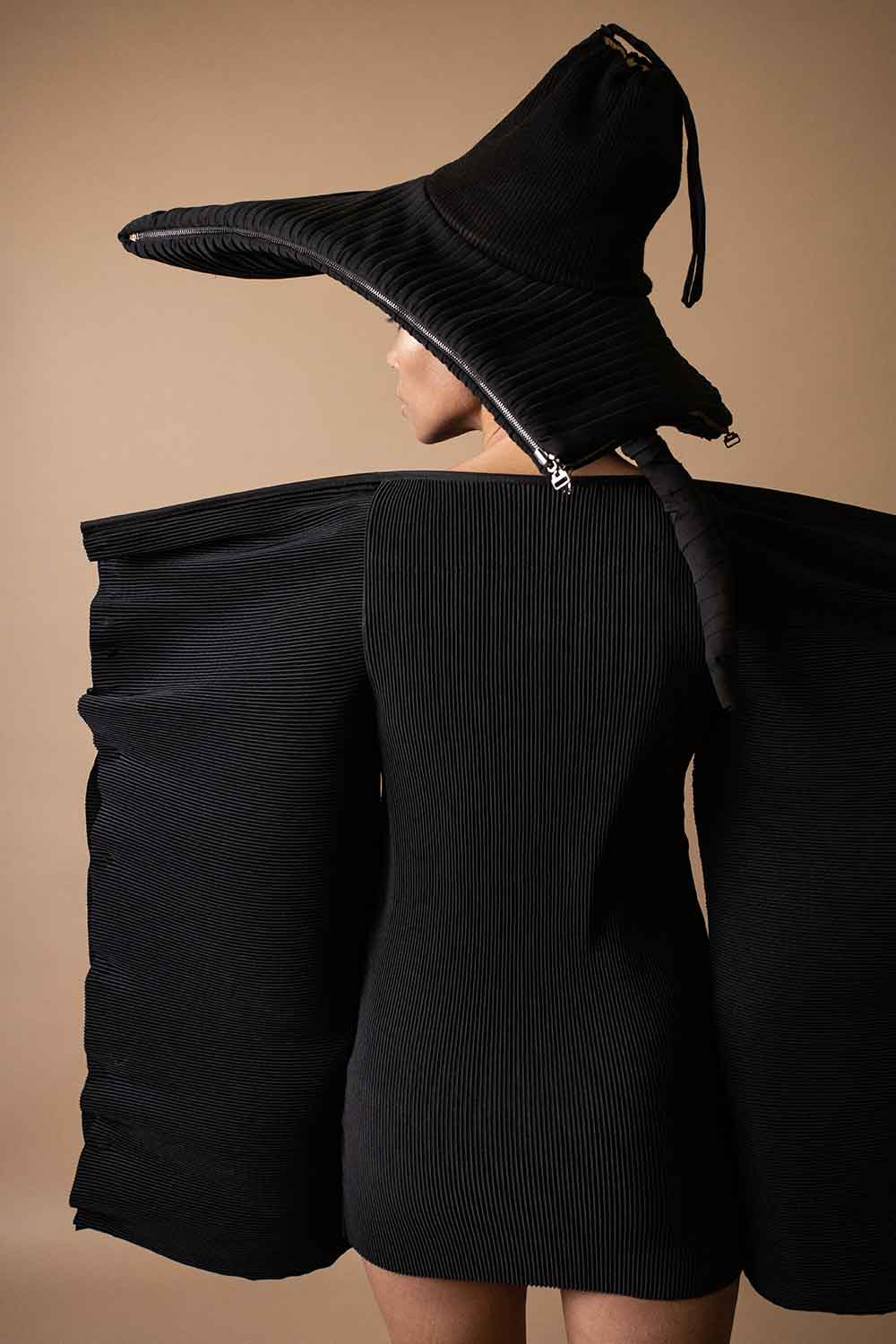
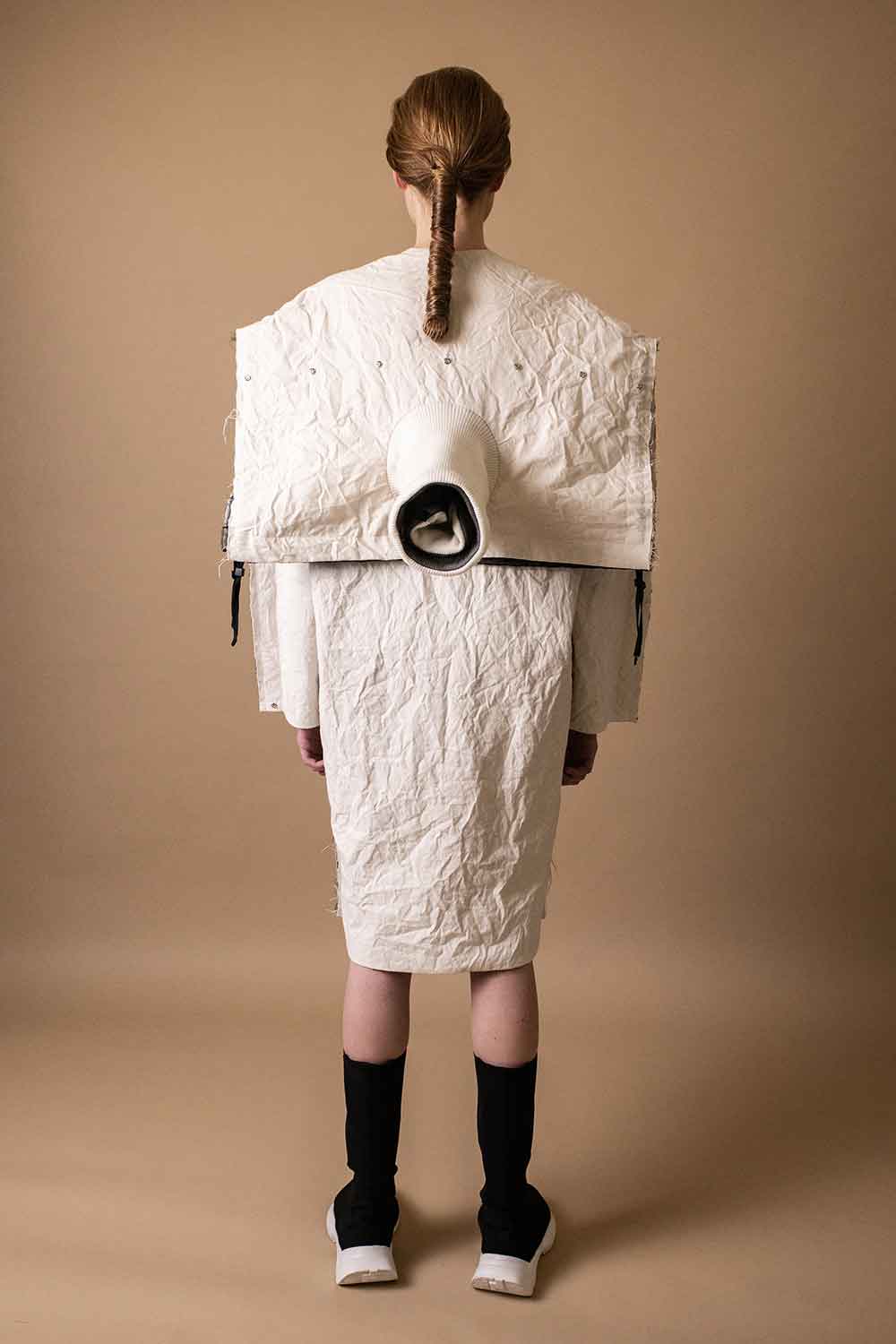

Irina, you are elevating fashion to a new level of functionality, with a progressive approach to fashion consumption and sustainable innovation. What has your brand been based on?
I have always admired Martin Margiela’s revolutionary vision of clothes as clothes, their meaning as an object and subject of fashion. I have been inspired by Issey Miyake’s celebration of the properties and potential of fabrics. I live in Kiev, and when I was 14 I got to meet in person my favourite Ukrainian designer at the time, Victoria Krasnova, and started attending her studio. I learned a lot from her avant-garde and authentic designs, as she mixed constructivism with ethnic heritage. Later, simultaneously with my studies at the National University of Technologies and Design in Kiev, I did an internship with Krasnova, which was a priceless experience that has laid the foundations for my future work.
“Our pattern-making innovations help to minimise customer purchases and create a versatile wardrobe with a few variable garments”.


Your previous collections are made up of modular pieces that can be transformed into various styling options; would someone with little practice in handicrafts be able to transform your pieces into different options?
The main thing is to understand the idea and purpose of the metamorphosis of each design, and once you have understood it, you will manage to modify it. To make the process of understanding as easy as possible, we publish a video lookbook for each collection, in which I show how to transform each garment.
You are currently viewing a placeholder content from Default. To access the actual content, click the button below. Please note that doing so will share data with third-party providers.
More Information
For our AW21 line we did a show at the Ukrainian Fashion Week and, as it was only shown to the online public, we decided to show the variations of the outfits on the catwalk itself. Together with my husband and “partner in crime” Anatolii, we radically changed the models’ outfits in a matter of seconds in front of the cameras.
You are currently viewing a placeholder content from Default. To access the actual content, click the button below. Please note that doing so will share data with third-party providers.
More Information“DZHUS pieces are very easy to transform, from a technical point of view. It is often necessary to redo some zips or buttons to get a completely new shape.”



Your collections are timeless, genderless, vegetarian-friendly… certainly not for everyone.
Well, DZHUS is not that unconventional. We launch seasonal collections, it’s just that their design isn’t governed by certain trends and is therefore timeless. I have never said that DZHUS is genderless, and when I design, I always imagine women wearing our pieces. On the other hand, I create complex, geometric silhouettes whose aesthetics seem more unisex than feminine. Naturally, we get a lot of orders from men, and I am pleased that they can also find styles suitable for them in our collections.
“Sustainable packaging is crucial for us. Our customers receive their orders packed in a cotton transformer bag that can also be modified into various styles of top. Despite its high production cost, this packaging is free of charge for the customers and does not influence the price of the goods”.

Since the creation of the brand in 2010, what has changed in the direction of the brand concept?
Since the launch of the brand, I have reconsidered the sourcing and production processes a lot. In the beginning, I only focused on the visual aspect and the implementation of my ideas, whereas now I think first of all about the comfort of our customers and the practical issues and, of course, the quality of the materials used. The change has started in 2013, when we received an order from the Hunger Games costume team, after a long period in which we have had much more appreciation from the media than from actual sales. While it was very flattering to be involved in such a high-profile project, for me it pointed to the fact that my designs strongly lacked usability. And since I always wanted to make conceptual clothes and not theatre costumes, I started to pay much more attention to the utilitarian potential of our garments.
“My greatest joy is to see DZHUS pieces living their own life, worn by real and very special people.”
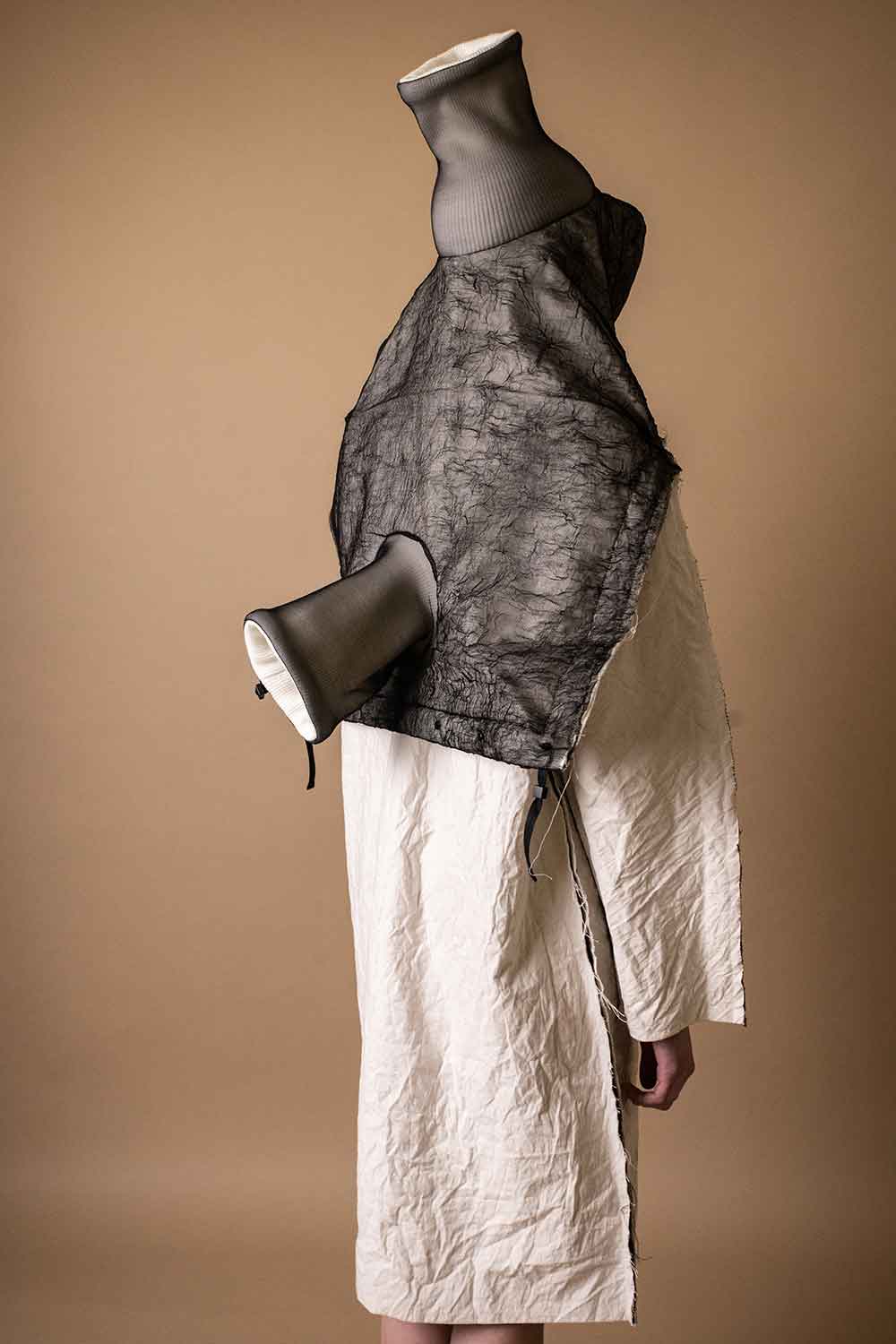

Would you say your work is political?
No, I’ve never tried to translate any political ideas into my designs. It’s already so complicated to translate design itself, and by ‘design’ I always mean innovations and authenticity, that I have no time at all left for learning politics. I’m a complete profane in political issues, and I believe it’s important to realise that and let others do what they are good at.
What’s the current landscape of sustainable fashion in Ukraine?
Ukraine is an amazing Klondike of design talents, and I’m very glad that the local fashion industry seems to be moving in a conscious direction. However, the sustainable origin of materials imported to Ukraine is still hardly possible to track, whereas buying wholesale volumes of fabrics upfront directly from the EU does not match DZHUS’ principles of individualisation and zero-waste. Unlike the cruelty-free composition that isn’t hard to define, when it comes to textiles’ organic manufacturing, for example, we have nothing left than just to trust our suppliers. Therefore, although DZHUS is on its way to production transparency, we cannot claim to be ‘eco-friendly’ at the current stage of development. There’s still so much to learn and resolve…
+ Words: Alejandra Espinosa, Luxiders Magazine


